Enzymes(酶)
Enzymes are very efficient and specific catalyst proteins which react with 1 or few types of substrates in biochemical reactions and are responsible for bringing about almost all of the chemical reactions in living organisms. Enzymes speed up reactions by providing an alternative reaction pathway of lower activation energy. Without enzymes, reactions take place at a rate far too slow for the pace of metabolism which means that they speed up the chemical reactions in living things.
There are 2 types of enzymes, ones that help join specific molecules together to form new molecules & others that help break specific molecules apart into separate molecules. Enzymes play many important roles ouside the cell as well. One of the best examples of this is the digestive system. For instance, it is enzymes in your digestive system that break food down in your digestive system break food down into small molecules that can be absorbed by the body. Some enzymes in your digestive system break down starch, some proteins and others break down fats. The enzymes used to digest our food are extra-cellular since they are located outside our cells & enzymes inside our cells are intra-cellular enzymes. Enzymes are used in ALL chemical reactions in living things; this includes respiration, photosynthesis, movement growth, getting rid of toxic chemicals in the liver and so on. Enzymes are proteins that must have the correct structure to be active. They are very easily affected by heat, pH and heavy metal ions.
Ribonucleoprotein enzyme catalytic activity is located in the protein part but for some the catalytic activity is in the RNA part. A catalyst is any substance which makes a chemical reaction go faster, without itself being changed. A catalyst can be used over and over again in a chemical reaction and does not get used up.
Enzymes lower the amount of activation energy needed by binding to the reactants of the reaction they catalyze, thus speed up the reaction and can process millions of molecules per second. Enzymes are typically large proteins with high molecular weight that permit reactions to go at conditions that the body can tolerate.
Enzyme nomenclature is based on what the enzyme reacts with & how it reacts along with the ending ase.
Enzymes must get over the activation energy hurdle.
Enzymes change how a reaction will proceed which reduces the activation energy and makes it faster. The more we increase the enzyme concentration the faster the reaction rate for non-catalyzed reactions. Enzymes that are catalyzed reactions also increase reaction rate at higher level of concentration but up to a certain point called Vmax which means that the enzyme has reached its maximum point. The reaction is limited by both the concentrations of the enzyme and substrate. Enzymes as catalysts take part in reactions which provide an alternative reaction pathway. Enzymes do not undergo permanent changes and remain unchanged at the end of the reaction. They only change the rate of reaction, not the position of the equilibrium.Enzymes as catalysts are highly selective by only catalysing specific reactions due to the shapes of the enzyme’s molecule.
Enzymes contain a globular protein part called apoenzyme and a non-protein part named cofactor or prosthetic group or metal-ion-activator. Changes in temperature and pH have great influence on the intra- and intermolecular bonds that hold the protein part in their secondary and tertiary structures.
Examples of cofactors are 1. Prosthetic group that are permanently bound to the enzyme. 2. Activator group which are cations (positively charged metal ions) & temporarily bind to the active site of the enzyme. 3.Coenzymes, usually vitamins or made from vitamins which are not permanently bound to the enzyme molecule, but combine with the enzyme-substrate complex temporarily. Enzymes require the presence cofactors before their catalytic activity can be exerted. This entire active complex is referred to as the holoenzyme.
Without enzymes, our guts would take weeks to digest our food, our muscles, nerves and bones would not work properly and so on…
Main Enzyme category groups:
Oxidoreductases:
All enzymes that catalyse oxido-reductions belong in this class. The substrate oxidized is regarded as a hydrogen or electron donor. The classification is based on 'donor:acceptor oxidoreductase'. The common name is 'dehydrogenase', wherever this is possible; as an alternative, 'acceptor reductase' can be used. 'Oxidase' is used only where O2 is an acceptor. Classification is difficult in some cases, because of the lack of specificity towards the acceptor.
Transferases:
Transferases are enzymes that transfer a group, for example, the methyl group or a glycosyl group, from one compound (generally regarded as donor) to another compound (generally regarded as acceptor). The classification is based on the scheme 'donor:acceptor grouptransferase'. The common names are normally formed as 'acceptor grouptransferase' or 'donor grouptransferase'. In many cases, the donor is a cofactor (coenzyme) that carries the group to be transferred. The aminotransferases constitute a special case.
Hydrolases:
These enzymes catalyse the hydrolysis of various bonds. Some of these enzymes pose problems because they have a very wide specificity, and it is not easy to decide if two preparations described by different authors are the same, or if they should be listed under different entries. While the systematic name always includes 'hydrolase', the common name is, in most cases, formed by the name of the substrate with the suffix -ase. It is understood that the name of the substrate with this suffix, and no other indicator, means a hydrolytic enzyme. It should be noted that peptidases have recommended names rather than common names.
Lyases:
Lyases are enzymes that cleave C-C, C-O, C-N and other bonds by means other than by hydrolysis or oxidation. They differ from other enzymes in that two (or more) substrates are involved in one reaction direction, but there is one compound fewer in the other direction. When acting on the single substrate, a molecule is eliminated and this generates either a new double bond or a new ring. The systematic name is formed according to 'substrate group-lyase'. In common names, expressions like decarboxylase, aldolase, etc. are used. 'Dehydratase' is used for those enzymes that eliminate water. In cases where the reverse reaction is the more important, or the only one to be demonstrated, 'synthase' may be used in the name.
Ligases:
Ligases are enzymes that catalyse the joining of two molecules with concomitant hydrolysis of the diphosphate bond in ATP or a similar triphosphate. 'Ligase' is often used for the common name, but, in a few cases, 'synthase' or 'carboxylase' is used. 'Synthetase' may be used in place of 'synthase' for enzymes in this class.
Products for Enzymes
- 41701(11)
- Activating Transcription Factor(3)
- Adenylate Kinase(10)
- AHCY(3)
- Aldolase(9)
- Asparaginase(5)
- Aurora Kinase(18)
- Beta Lactamase(3)
- Calcium and Integrin Binding(2)
- Calcium/Calmodulin-Dependent Protein Kinase(4)
- Carbonic Anhydrase(49)
- Casein Kinase(36)
- Cathepsin(52)
- Chitinase(5)
- Creatin Kinases(9)
- Cyclin(7)
- Cyclin-Dependent Kinase(18)
- Cyclophilin(23)
- Deaminase(14)
- Decarboxylase(12)
- Dehydrogenase(96)
- Discoidin Domain Receptor Tyrosine Kinase(2)
- DNA Polymerase(4)
- EGF Receptor(3)
- Endonuclease(6)
- Enolase(10)
- Enterokinase(5)
- Epimerase(3)
- Esterase(15)
- FGF Receptors(12)
- FK506 Binding Protein(10)
- Fructosamine 3 Kinase(2)
- Galactosidase(5)
- Glucosidase(32)
- Gluteradoxin(7)
- Glycogen synthase kinase(2)
- Glycosylase(10)
- Glyoxalase(3)
- Granzyme(7)
- Guanylate Kinase(2)
- Heparanase(2)
- Histone Deacetylase(3)
- Hydratase(10)
- Hydrolase(33)
- Hydroxylase(6)
- Isomerase(26)
- Jun N-terminal Kinase(1)
- Jun Proto-Oncogene(2)
- Kallikrein(26)
- Ligase(4)
- Lipase(14)
- Lipocalin(6)
- Lyase(9)
- LYVE1(3)
- Mitogen-Activated Protein Kinase(16)
- MMP(68)
- Mutase(11)
- Natural Enzymes(4)
- Nuclease(18)
- Nucleotidase(4)
- Nudix Type Motif(11)
- Other Enzymes(63)
- Oxidase(23)
- Oxygenase(12)
- Paraoxonase(3)
- Peptidase(41)
- Peroxiredoxin(10)
- Phosphatase(150)
- Phosphorylase(9)
- PI3-kinase(5)
- Polymerase(13)
- PPARG(2)
- Protease(15)
- Proteasome(54)
- Protein Kinase Akt1/PKB alpha(4)
- Protein Kinase-A(7)
- Protein Kinase-C(3)
- Protein Kinases(86)
- Protein Tyrosine Phosphatase(10)
- Reductase(60)
- Secreted Phospholipase A2(10)
- Serine Threonine Kinase(4)
- Sulfatase(8)
- Synthase(23)
- Synthetase(33)
- TGFBR(3)
- TGM2(3)
- TIMP(10)
- TPA(4)
- Transferase(156)
- Tyrosine Kinase(9)
- Ubiquitin Conjugating Enzyme(39)
- Uromodulin(4)
- VEGF Receptors(14)
- Transaminase(19)
- Hexokinase(6)
- TIE1(6)
- Cat.No. 产品名称 Information
-
GP21441
BHMT2 Human
Betaine-Homocysteine Methyltransferase 2 Human Recombinant

-
GC60647
Bis(maltolato)oxovanadium(IV)
双(麦芽醇)氧钒(IV),BMOV
BMOV (Bis maltolato oxovanadium, Bis(maltolato)oxovanadium (IV)) is a potent oral vanadium complex with anti-diabetic properties and insulin-mimicking effects.BMOV is shown to improve cardiac dysfunctions in diabetic models.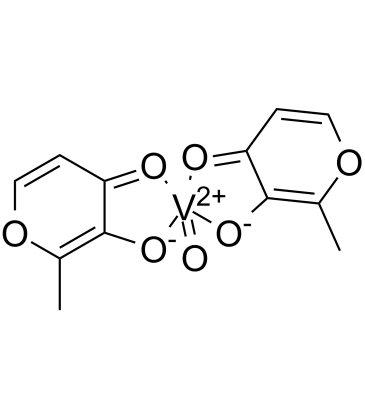
-
GP22426
BLK Human
B lymphoid tyrosine kinase Human Recombinant

-
GP21443
BLMH Human
BLM Hydrolase Human Recombinant

-
GP26130
BLMH Mouse
BLMH Mouse Recombinant produced in E

-
GP21444
BLVRA Human
Biliverdin Reductase A Human Recombinant

-
GP21445
BLVRB Human
Biliverdin Reductase B Human Recombinant

-
GP21446
BLVRB Mouse
Biliverdin Reductase B Mouse Recombinant

-
GC72918
BN-82685
IRC-083065
BN-82685是一种基于醌的CDC25抑制剂,对CDC25C、CDC25C cat、CDC25A、CDC25B2、CDC25K3的IC50分别为201 nM、117 nM、109 nM、160 nM、249 nM。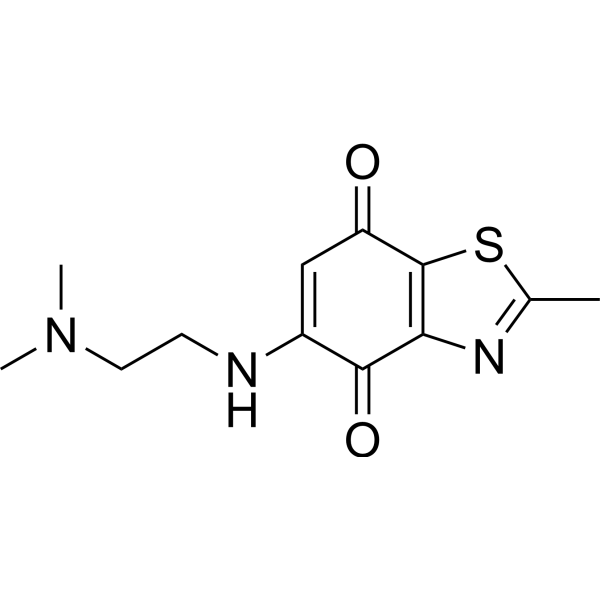
-
GC63788
BN82002 hydrochloride
BN82002 hydrochloride 是 CDC25 phosphatase 家族的有效,选择性和不可逆的泛抑制剂。 BN82002 hydrochloride抑制 CDC25A,CDC25B2,CDC25B3,CDC25C CDC25A 和 25C-cat 的 IC50 值分别为 2.4、3.9、6.3、5.4 和 4.6 µM。 BN82002 hydrochloride 显示出比 CD45 酪氨酸磷酸酶高约 20 倍的选择性。
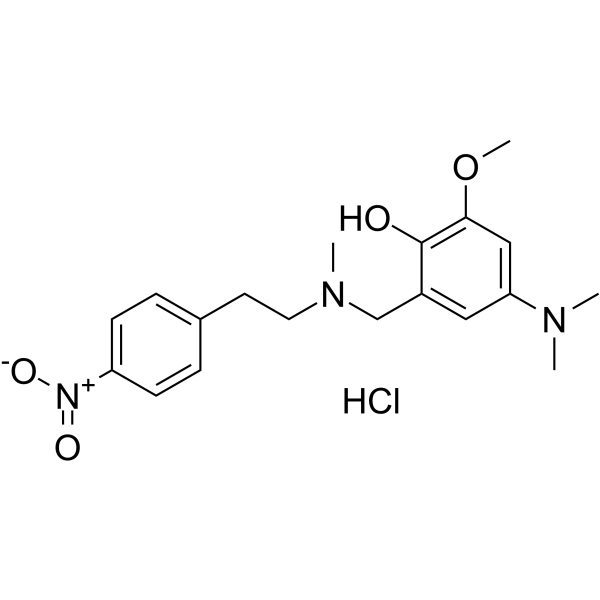
-
GC65010
Bortezomib-d8
PS-341-d8; LDP-341-d8; NSC 681239-d8
Bortezomib-d8 (PS-341-d8) 是 Bortezomib 的氘代物。Bortezomib (PS-341) 是一种可逆性和选择性的蛋白酶体 (proteasome) 抑制剂,通过靶向苏氨酸残基有效抑制 20S 蛋白酶体 (Ki=0.6 nM)。Bortezomib 破坏细胞周期、诱导细胞凋亡以及抑制核因子 NF-κB。Bortezomib 是第一种蛋白酶体抑制剂,具有抗癌活性。
-
GP21447
BPGM Human
2,3-Bisphosphoglycerate Mutase Human Recombinant

-
GP21448
BPHL Human
Biphenyl Hydrolase-Like Human Recombinant

-
GP21449
BPNT1 Human
3(2) 5-Bisphosphate Nucleotidase 1 Human Recombinant

-
GC74024
BPU
BPU在亚g1期阻止细胞周期进程。
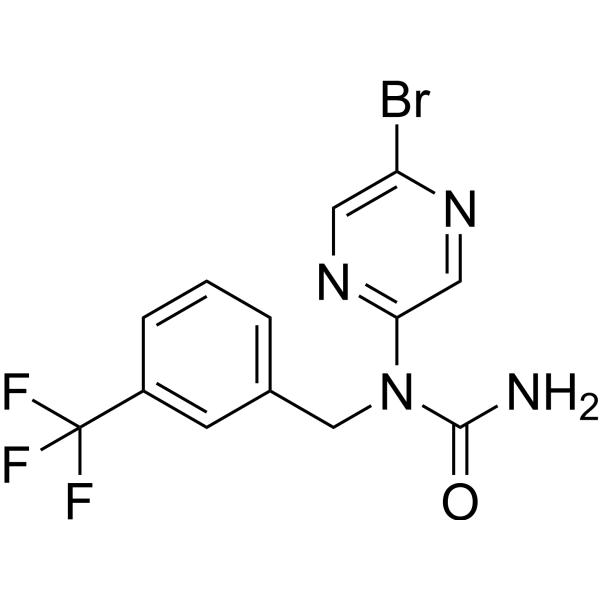
-
GC42969
bpV(phen) (potassium hydrate)
Bisperoxovanadium(phen), Potassium Bisperoxo(1,10phenanthroline) oxovanadate (V)
An inhibitor of phosphatases
-
GP22427
BRAF Human
B-Raf Proto-Oncogene Human Recombinant

-
GC46101
Brinzolamide-d5
布林佐胺杂质,AL-4862-d5
An internal standard for the quantification of brinzolamide

-
GP21442
BTD Human
Biotinidase Human Recombinant

-
GC62880
BTX161
BTX161 一种 Thalidomide 类似物,是一种有效的 CKIα 降解剂。BTX161 比 Lenalidomide更好地介导人类 AML 细胞中 CKIα 的降解,并激活 DNA损伤反应 (DDR) 和 p53,同时稳定 p53 拮抗剂 MDM2。
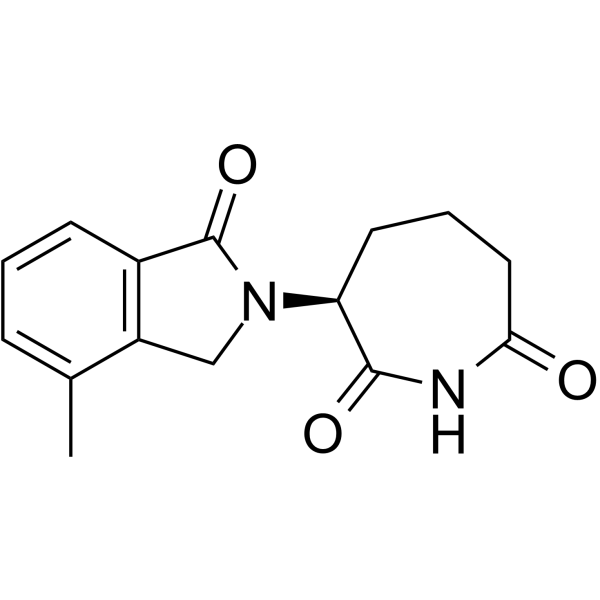
-
GC39233
Butyl isobutyl phthalate
邻苯二甲酸-1-丁酯-2-异丁酯
Butyl isobutyl phthalate (BIP), isolated from the rhizoid of Laminaria japonica, is a non-competitive inhibitor of α-glucosidase with IC50 of 38 μM. Butyl isobutyl phthalate displays a significant hypoglycemic effect and has the potential for diabetes treatment.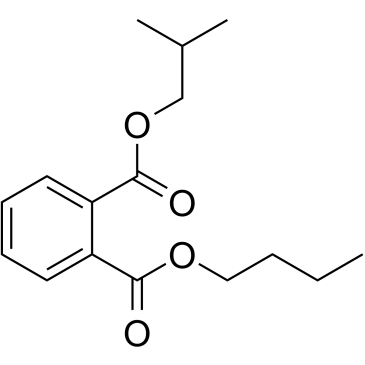
-
GP22490
c-erbB-2 Human
c-erbB2 Protein Human Recombinant

-
GP22456
C-JUN Human
Jun Proto-Oncogene Human Recombinant

-
GP22457
C-JUN Human (241 a.a.)
Jun Proto-Oncogene (1-241 a.a.) Human Recombinant

-
GP21450
C1GALT1 Human
Core 1 Beta3-Gal-T1 人类重组体

-
GC71502
CA/MAO-B-IN-1
CA/MAO-B-IN-1(化合物78)是人脑碳酸酐酶(CA)和单胺氧化酶-B(MAO-B)的双重抑制剂,IC50分别为8.8和7.0 nM。

-
GP26134
CA1 E.Coli
CA1 E

-
GP26133
CA1 Human, Active
CA1 Human Recombinant produced in E

-
GP21457
CA11 Human
Carbonic Anhydrase XI Human Recombinant

-
GP21458
CA12 Human
Carbonic Anhydrase XII Human Recombinant

-
GP21460
CA13 Human
Carbonic Anhydrase XIII Human Recombinant

-
GP21459
CA14 Human
Carbonic Anhydrase XIV Human Recombinant

-
GP21451
CA3 Human
Carbonic Anhydrase III Human Recombinant

-
GP21453
CA8 Human
Carbonic Anhydrase 8 Human Recombinant

-
GP26135
CA8 Human, Active
CA8 Human Recombinant produced in E

-
GC71869
Caffeoyltryptophan
Caffeoyltryptophan是一种竞争性PTP1B抑制剂,IC50为16.99 μM。
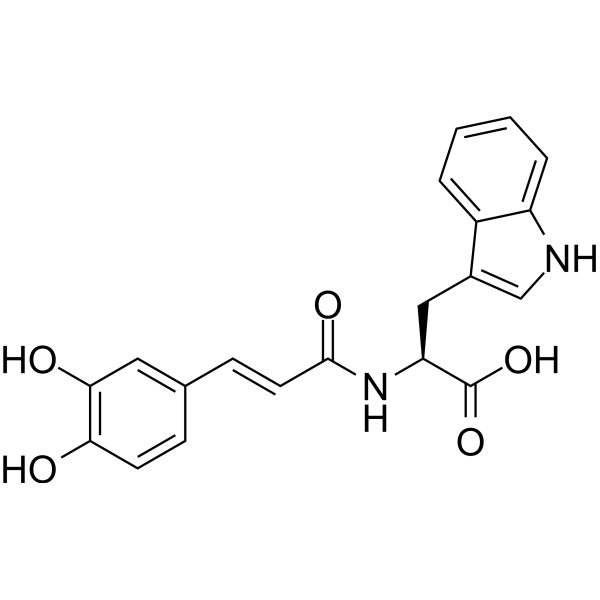
-
GP21452
CAIII Human, His
Carbonic Anhydrase III Human Recombinant, His Tag

-
GC64161
Calcium glycerophosphate
甘油磷酸钙
Calcium glycerophosphate 是肠道碱性磷酸酶 F3 的抑制剂 (intestinal alkaline phosphatase F3)。Calcium glycerophosphate是全肠外营养溶液中钙和磷的来源。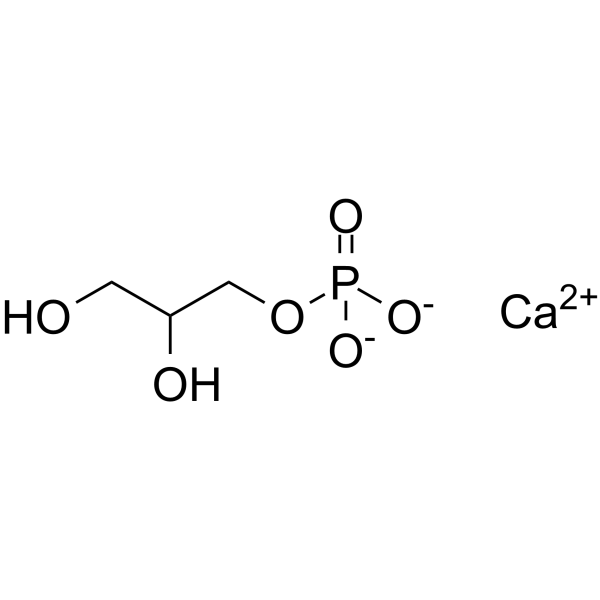
-
GC40694
Calpain Inhibitor II
Calpain inhibitor II
A non-selective cysteine protease inhibitor
-
GC67908
Calpain-2-IN-1
Calpain-2-IN-1 (Formula 1A) 是一种 calpain-2 亚型特异性的抑制剂,对 calpain-1 和 calpain-2 的 Ki 分别为 181 nM 和 7.8 nM。Calpain-2-IN-1 可用于神经退行性疾病和其他突触功能疾病的研究。

-
GP22964
CAMK2N1 Human
Calcium/Calmodulin Dependent Protein Kinase II Inhibitor 1 Human Recombinant

-
GP22431
CAMK2N1 Mouse
Calcium/Calmodulin-Dependent Protein Kinase II Inhibitor 1 Mouse Recombinant

-
GP22432
CAMK2N2 Human
Calcium/Calmodulin-Dependent Protein Kinase II Inhibitor 2 Human Recombinant

-
GP22430
CAMK4 Human
Calcium/Calmodulin-Dependent Protein Kinase IV Human Recombinant

-
GP21456
Carbonic Anhydrase 1 Human
Carbonic Anhydrase-1 Human Recombinant

-
GP21455
Carbonic Anhydrase 2 Human
Carbonic Anhydrase 2 Human Recombinant

-
GP21454
Carbonic Anhydrase II E.coli
Carbonic Anhydrase II E.coli Recombinant

-
GC71498
Carbonic anhydrase inhibitor 16
Carbonic anhydrase inhibitor 16(化合物1)是一种登革热蛋白酶抑制剂,对碳酸酐酶hCA I和hCA II具有抑制活性(Ki:28.5 nM,2.2 nM)。
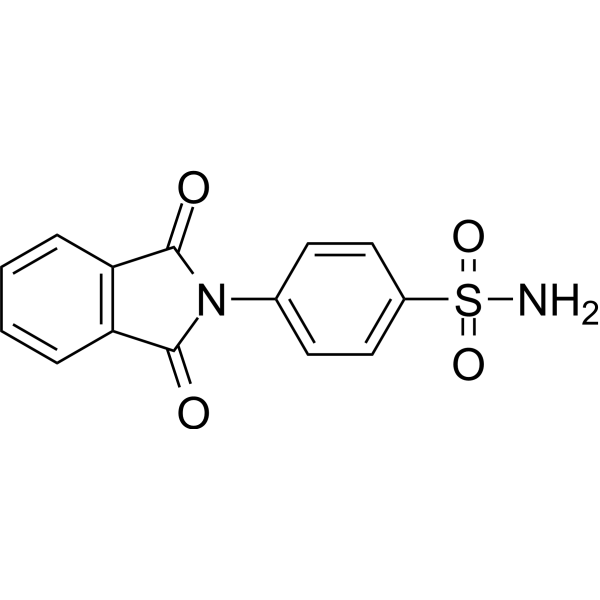
-
GC68830
Carbonic anhydrase inhibitor 2
Carbonic anhydrase inhibitor 2 (compound 7c) 是一种碳酸酐酶 II (carbonic anhydrase II) 抑制剂,可降低青光眼兔的眼压。

-
GP21461
Carboxypeptidase B Rat
Carboxypeptidase-B Rat Recombinant





